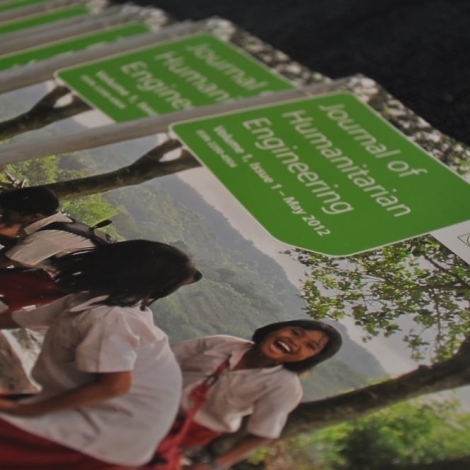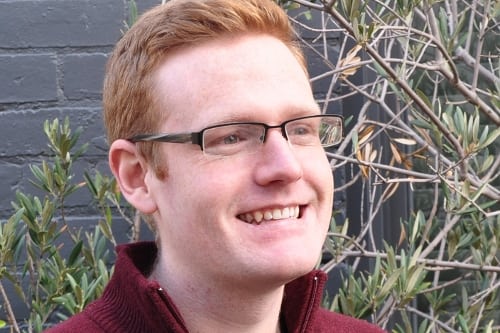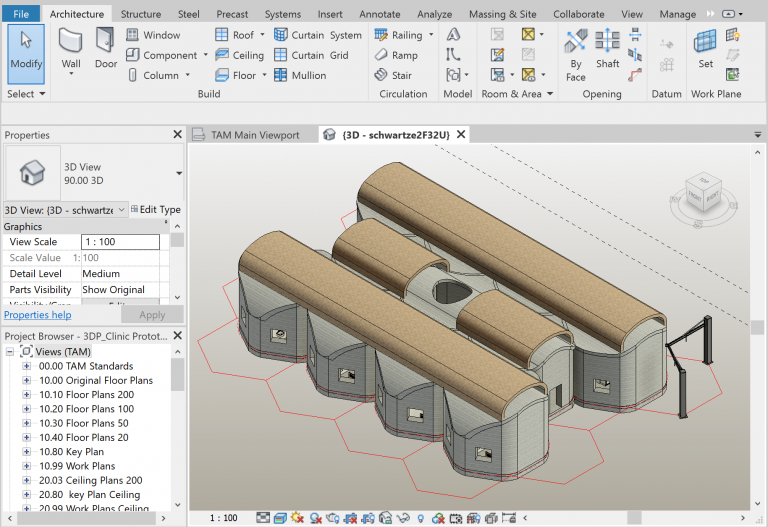One of the wishes we’ve heard from experts in humanitarian design and engineering is for academia to keep pace with the rising interest in the field. Appropriate technology design and the invention of new devices, tools and infrastructure for use in regions with few resources has apparently had trouble gaining recognition in major universities. With a few notable exceptions, many of which are listed in our Learning Lab, formal academic programs in appropriate technologies are rare, and academics have few outlets to publish their research.
With that scarcity of outlets in mind, the success of the new Journal of Humanitarian Engineering is all the more encouraging. The Engineers Without Borders Institute in Melbourne, Australia published the first edition of the journal in May, and its second edition is planned for release early next year.
The first edition gets a lot of things right. In fact, anyone who is reading this now can verify that because one of the things it did right was to make the research available for free download. Other things they did right were the broad scope of subjects covered. The seven papers in the first edition address big issues: water and sanitation, air quality and energy. And, importantly, they don’t stop with an explanation of the technology. The research also spans culture, education and the necessity of a sense of ownership for a project to succeed.
The first edition’s final study is a good example. It highlights studies of a proposed two-pronged solution to reduce waterborne illness: harvesting rainwater and building septic systems. Drawing data from studies in the southern Kalimantan region of Indonesia, the researchers acknowledge that residents are apprehensive about using rainwater, but for different reasons in each community. Then the researchers make an interesting point:
“We need to be careful not to make the assumption that the local people want clean water and their wastewater treated.”
The researchers recommend a tailored public education program to allay fears and encourage people to embrace the new technologies. Future research could refine these kinds of recommendations, of course, and that is one reason why this kind of journal is necessary.
We spoke with Julian O’Shea, editor of the journal and director of the EWB Institute. This is what he says about this new initiative that has impressed us already.
E4C: Would you tell us about your own background and interest in humanitarian technologies?
JO: I’m a professional engineer with a background in electronics and a strong interest in education. Prior to joining the team at EWB, I was the International Outreach Officer for SPEED, the Student Platform for Engineering Education Development, where I spent twelve months on a travel and research project visiting academics, students, engineers and community development professionals in over 20 countries across six continents. It was a great opportunity to see first-hand what makes meaningful and lasting change.
After returning to Australia, I joined EWB as the organisation’s Research Coordinator. This is a wonderful role and I led the development and conduct of innovative research programs with our community partners in Nepal, India, Cambodia, Vietnam, Timor Leste and in Aboriginal communities in Australia. The projects all apply engineering processes in innovative ways such as designing low-smoke, dung-burning stoves for deforested areas of Nepal; developing low-cost dust masks for stone quarry workers in India; and finding better ways of designing and installing pipes for landslide affected areas of Timor Leste.
E4C: How did the journal get started?
JO: I noticed there was a gap within the academic literature for technical publications on engineering for community development. Many engineering journals focus on the technology, rather than the community applications; while many community development publications lack the technical expertise to properly assess the projects. I saw this as an opportunity and developed the publication to launch with our first Humanitarian Engineering Research Forum: Designing Our Future earlier this year. Both the Journal and Research Forum were very well received within the engineering and academic sectors and I’ve had expressions of interest from around the country and internationally on people seeking to be involved. It’s a credit to work of all of the researchers and the high quality of their work.
E4C: How is the journal administrated?
JO: I edit the publication with my assistant editor, Emily Wisniewski. In the first iteration, most of the papers came from our formal research program, and their basis was a post-graduate, honors or final year thesis. We then reviewed and edited the publications. Future publications will be reviewed through a peer-review process and we are in the process of establishing an Editorial Committee for the Journal.
Our expectation is that we will publish two editions of the journal each year. We have an open and ongoing submission process and encourage researchers in the field of engineering for developing communities to check out the guidelines on the Journal website.
E4C: What your plans for future issues and your goals moving forward?
JO: We are looking forward to building a community around research in the field of humanitarian engineering, through future editions of the journal as well as developing other opportunities to collaborate. The success of the Journal has inspired us to develop a new publication for practitioners and professionals working in the sector – which we expect to release over the next few months.
I’m really looking forward to continue to work with passionate and inspired researchers in partnership with communities on new and innovative ways to apply technology to build a better work.
If any readers of the Engineering for Change website were interested in our work, I urge them to check out the journal, and get in contact if they would like to be involved.


